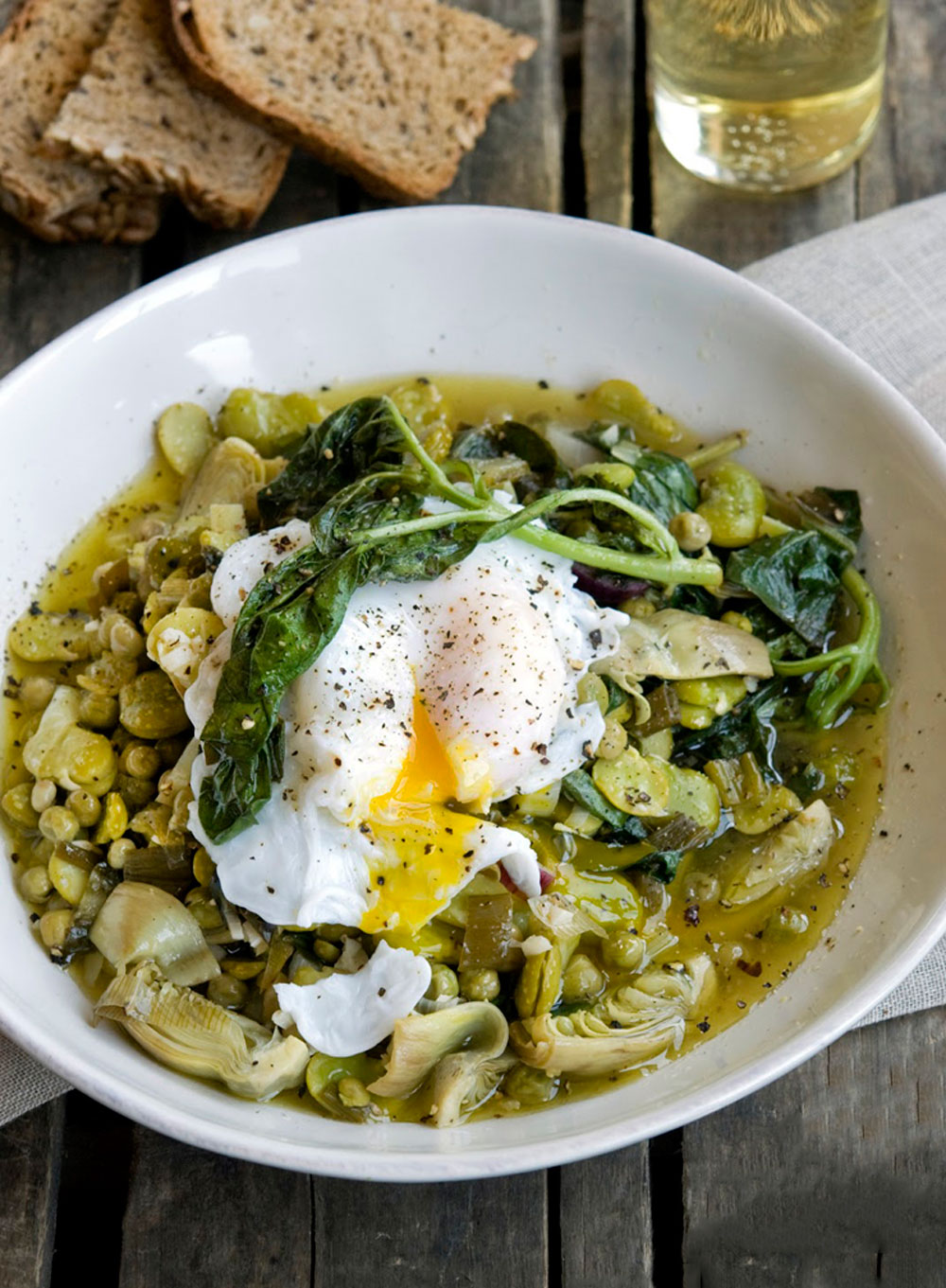Baby artichokes also take a little prepping, but as with the fava beans, they are not difficult to prepare. First, remove the tough outer leaves until you get to the light-green-yellow tender inner leaves. Second, cut off and discard the dark and medium green tops of remaining leaves. Third, cut off and discard the stem. Finally, with a pairing knife or vegetable peeler, cut off (or peel) and discard any remaining tough parts around the stem. Rub with lemon or place the artichokes in lemon water (2:1 ratio water to lemon juice) to prevent browning, until ready to be used.
Fava beans have arrived!!!
If you’ve never had fresh favas, they are nothing like their dried counterparts. In the raw, they are completely tender. Melt in your mouth tender. Almost buttery. Nothing really compares to fresh fava beans. Was surprised and delighted to see bushels full at the farmers’ market this past weekend. I quickly snatched up a few pounds, as I had the perfect recipe in mind, filed away for this very [perfect] occasion.
Scafata is an Umbrian Fava Bean Stew. Scafata translates into “hull”, which refers to the removing of the outer shell of the fava bean. It is Italy on a plate. It is spring on a plate. It is simply divine.
I can’t think of a better way to celebrate the flavors of spring — favas, English peas, baby artichokes, spring onions, Italian greens, mint, and basil — simmered in white wine, olive oil, and garlic until tender. All topped with poached duck (or chicken) eggs. Simple and rustic. If you have access to these ingredients, this is a dish I highly recommend trying. A perfect Sunday brunch, maybe the perfect Sunday brunch.
Prepping fava beans is not difficult, just takes a little time and patience. First, you must remove the beans from their pods. Second, blanch the beans to soften for easy removal of their outer shell. Third, peel off the outer shell (the beans slide right out after they’ve been blanched) to reveal its bright-green, tender bean. It involves a few steps, but totally worth the effort. And, they’re only around for a few months (typically June and July in the Washington, D.C., area ), so get them while you can, as they will quickly disappear (and then you will be very sad; okay, I will be very sad).
Umbrian Fava Bean Stew with Poached Duck Eggs
Slightly adapted from Jody Williams, Food(ography); serves 2 to 4
1/2 cup extra-virgin olive oil
1 cup dry white wine
3 cloves garlic, minced
2 dried red chiles
4 baby artichokes, trimmed and quartered
1 cup peeled and shelled fava beans (~ 2 1/4 pounds in their shells)
1/2 cup fresh shelled peas
2 scallions, sliced
1/2 bunch Italian greens (such as Trevisio radicchio, chickory, dandelion greens, or escarole) cut into 1-inch thick ribbons
8 to 10 basil leaves, roughly chopped
2 sprigs fresh mint
Sea salt and fresh ground black pepper to taste
2 to 4 eggs (1 per person)
Shaved Pecorino cheese, for serving
In a medium saucepan over medium heat, combine the olive oil, wine, garlic, and chiles. Add the artichokes and bring to a boil. Cook, partially covered, about 5 minutes.
Add the fava beans, peas and scallions. Cook 3 minutes more, lower the heat and stir in the greens, basil, mint sprigs, and salt and pepper to taste. Let simmer partially covered until the artichokes are tender, about 5 minutes.
Meanwhile, poach the eggs until the egg whites are set, but the yolks are still runny, 3 to 4 minutes. Using a slotted spoon, gently remove the eggs from the water and place on a paper towel-lined plate to drain.
Portion and werve the Scafata warm, topped with a poached egg and the Pecorino cheese.












